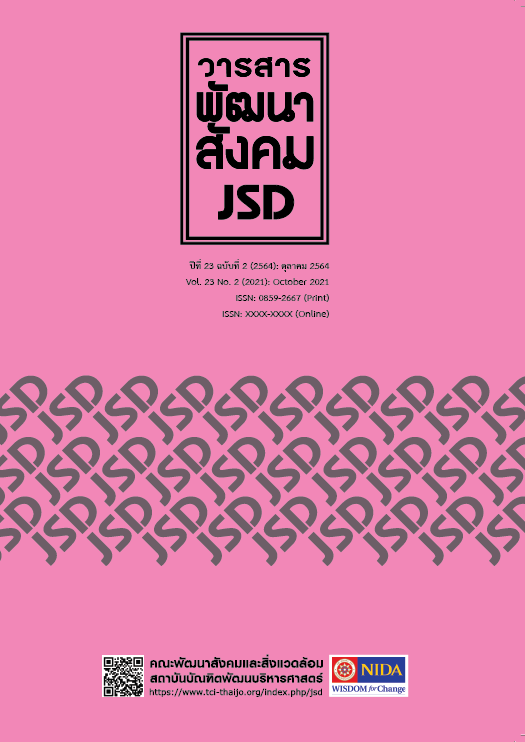เศรษฐศาสตร์การเมืองว่าด้วยการพัฒนา: ศึกษาการพัฒนาเขตพัฒนาพิเศษภาคตะวันออก
Main Article Content
บทคัดย่อ
Article Details
เอกสารอ้างอิง
Department of Public Works and Town & Country Planning. (2019, 5 August). (Draft) Map of the Eastern Special Development Zone: Land Use Plan Infrastructure and Utilities Development Diagram. [In Thai]. Supporting Documents for the Eastern Special Development Zone Policy Committee. No. 8/2019, At Phakdi Bodin Building, Government House of Thailand.
Eastern Economic Corridor Office of Thailand. (2018). Diagram included for the Development of the Eastern Special Development Zone 2017-2022. [In Thai]. Council of Ministers for Approval.
Government Gazette (1). (2017, May 26 ). Order of the Head of the National Council for Peace 28/2017 on Measures to Enhance the Development of the Eastern Economic Corridor. [In Thai] . Volume 134, special section 142 d., 18-19.
Government Gazette (2). (2017, October 25). Order of the Head of the National Council for Peace and Order No. 47/2017 on the terms of use Benefit in the land in the Eastern Economic Corridor [In Thai]. Volume 134, special section 261 n., 18-21.
Harvey, D. (2012). A Brief History of Neoliberalism. [In Thai]. Bangkok: Suan Nguen Mee Ma.
Kesboonchoo-Mead, K. (2013). The Internationalization of Capitalism and Neoliberalism. [In Thai]. Joural of Social Science, 43(2), 7-43.
Land Watch Thai. (2018). Farmers Land History in Yothaka Subdistrict Bang Nam Priao District Chachoengsao Province. [In Thai]. Retrieved November 20, 2020, from http://landwatchthai.org/1108
Laungaramsri, P. (2018). After the Special Economic Zone. [In Thai]. Chiang Mai: Studio So Small.
Network of Eastern Friends. (2019). Request to Submit the Request of Stakeholders with the Land Use Plan Eastern Special Development Zone. [In Thai]. Documents to Secretary-General of the Eastern Special Development Zone Policy Committee.
Ong, A. (2000). Graduated sovereignty in South-East Asia. Theory, Culture & Society, 17(4), 55–75.
People who support the development of the Eastern Special Development Zone. (2020, October 4). Reasons for Supporting the Advantages and Limitations of the Eastern Special Development Zone. Focus Group.
Phanthasen, A. et al. (2017). The Development of the Special Economic Development Zones of Thailand and the Synthesis of Knowledge from the East-West Economic Corridor Project Series and the Southern Economic Corridor In the Dimension of Politics, Law, Society, Economy Phase 2: Human mobility (Volume 1, Development of the Special Economic Development Zones of Thailand) [In Thai]. Thailand Research Fund.
Praditsil, C. et al. (2020). Progress Report on The Use of State Power to Oganize the Land System of the Eastern Economic Corridr. [In Thai]. Thailand Research Fund.
Saengkanokkul, P. (2010). The exclusion state in the thought of Giorgio Agamben.
[In Thai]. The Same Sky Journal. 8(1), 84-91.
Thai PBS News. (2020, July 16). The Public Sector Filed a Lawsuit Against the Administrative Court. Revoke the EEC Land Plan. [In Thai]. Retrieved October 15, 2020, from https://news.thaipbs.or.th/content/294641


